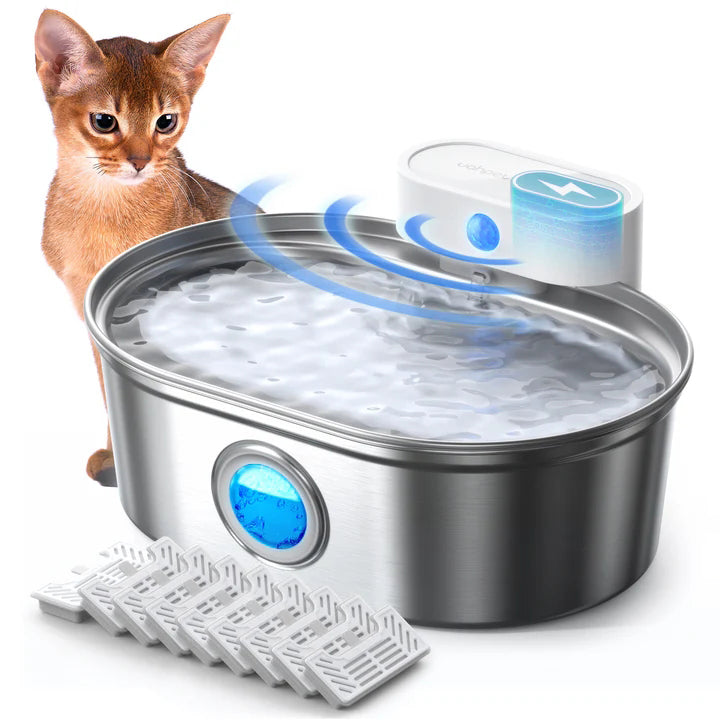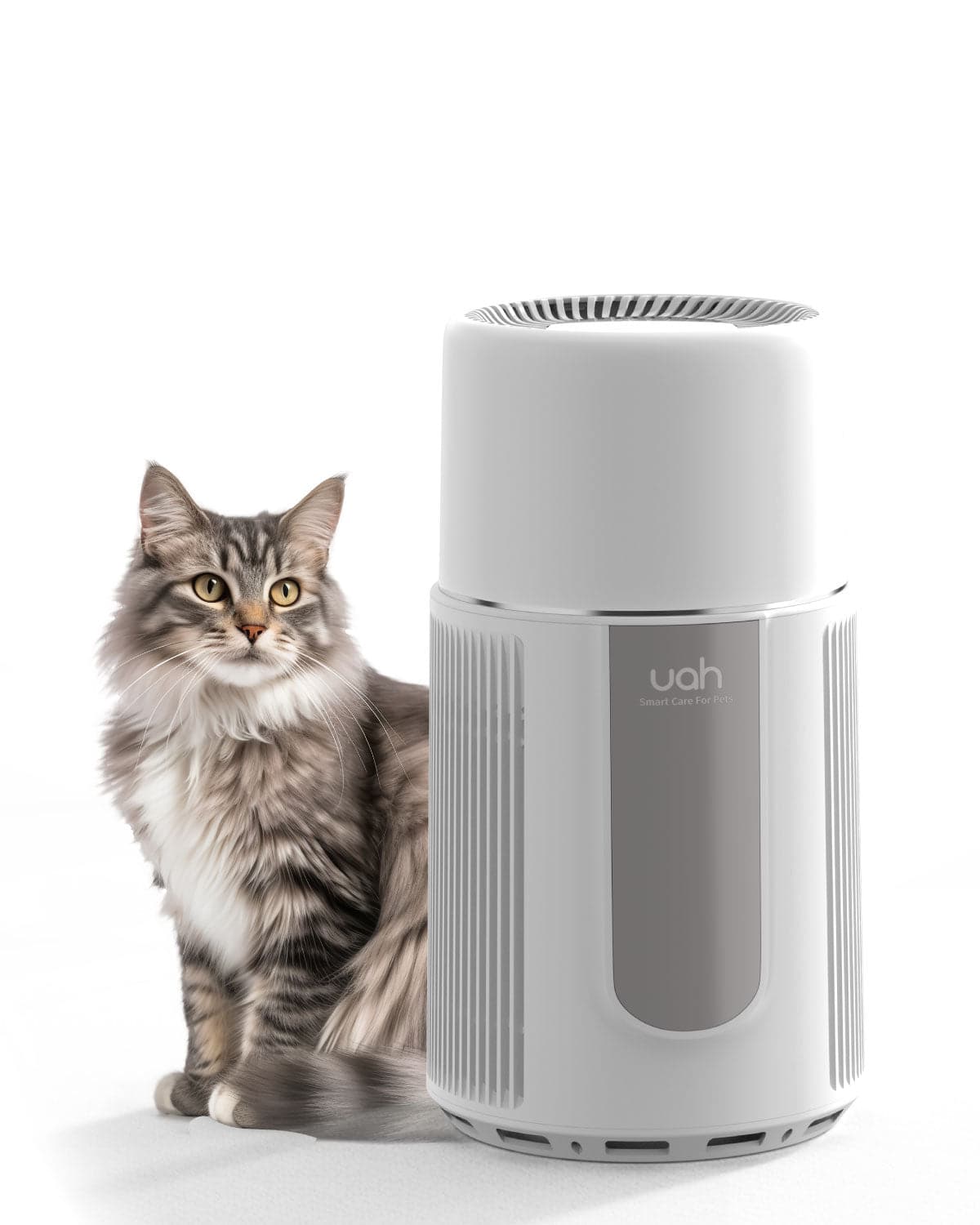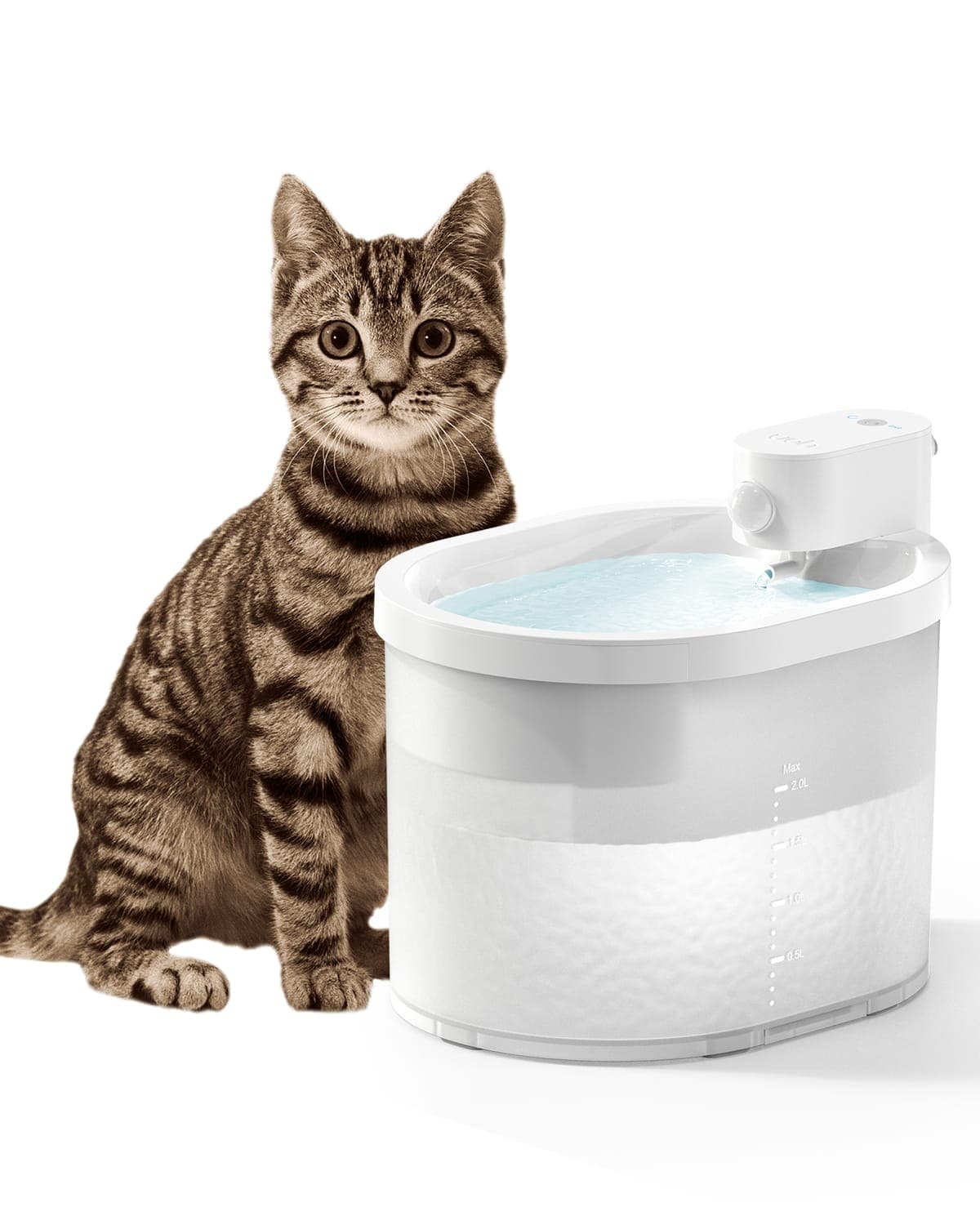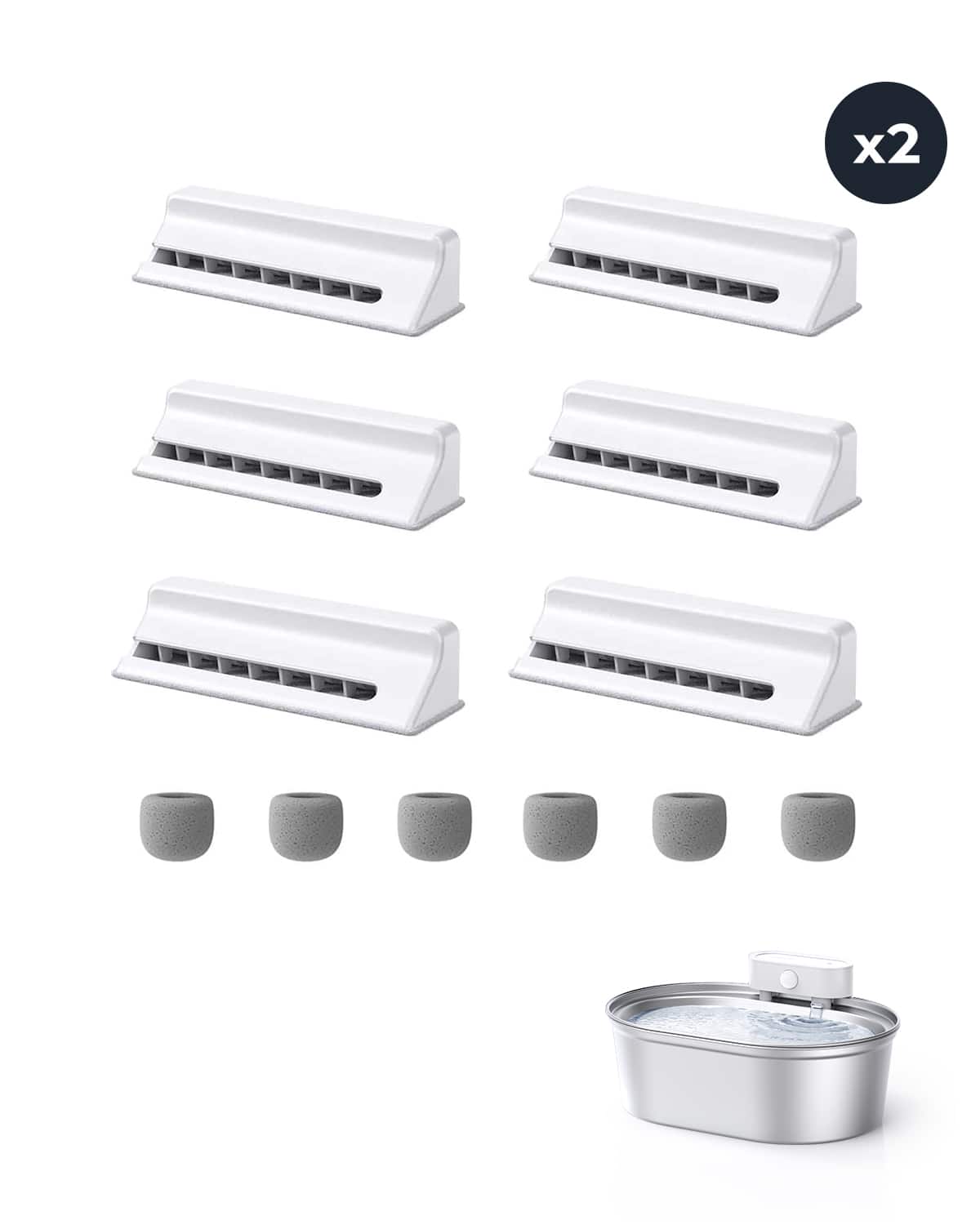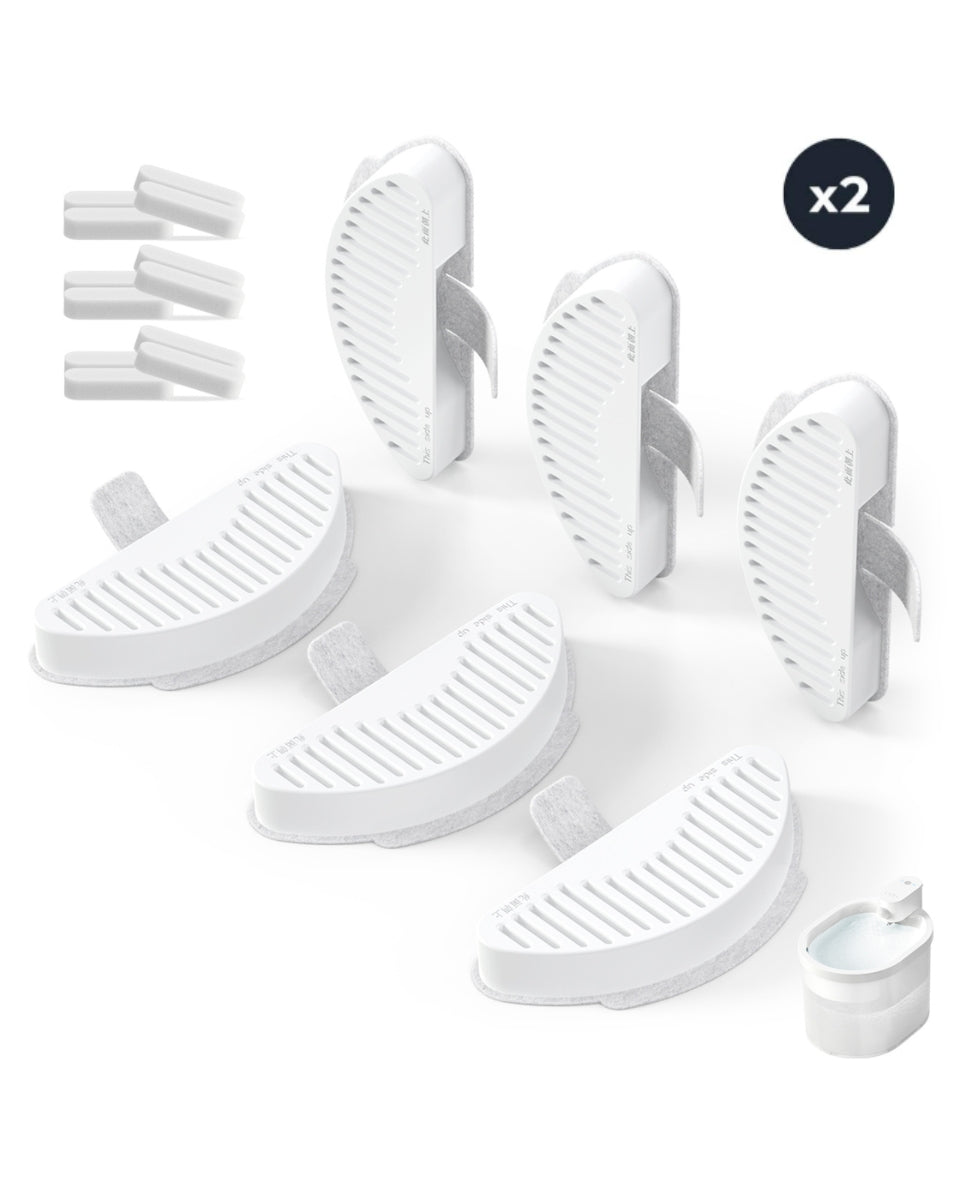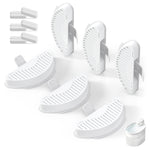Keeping your cat water fountain clean and free from slime is essential for your pet's health and well-being. A slimy fountain can harbor bacteria and algae, making the water unsafe for your furry friend. In this article, we'll explore effective methods to prevent your cat water fountain from getting slimy, ensuring your pet always has access to fresh and clean water.
Understanding the Causes of Slimy Cat Water Fountains
Before diving into prevention methods, it's important to understand why cat water fountains get slimy in the first place. The primary culprits are bacteria and algae, which thrive in moist environments. When water sits stagnant or is not regularly changed, these microorganisms can multiply, leading to the formation of slime. Additionally, mineral deposits from hard water can contribute to the problem, creating a breeding ground for bacteria.
Regular Cleaning is Key
One of the most effective ways to prevent your cat water fountain from getting slimy is to clean it regularly. Ideally, you should clean the fountain at least once a week. Start by unplugging the fountain and disassembling all its parts. Use a mild dish soap and warm water to scrub each component thoroughly. Pay special attention to crevices and hard-to-reach areas where bacteria and algae can hide. Rinse all parts well to remove any soap residue, as this can also contribute to slime buildup.
Use a Water Fountain Cleaner
In addition to regular cleaning, using a water fountain cleaner can help keep your cat's fountain slime-free. These cleaners are specifically designed to break down bacteria and algae, preventing them from forming slime. Be sure to choose a cleaner that is safe for pets and follow the manufacturer's instructions for use. Some cleaners require you to soak the fountain parts, while others can be added directly to the water.
Change the Water Frequently
Another simple yet effective way to prevent slime buildup is to change the water in the fountain frequently. Stagnant water is a breeding ground for bacteria and algae, so it's important to refresh the water at least every two to three days. If you notice the water becoming cloudy or developing an odor, change it immediately. This will not only prevent slime but also ensure your cat is drinking clean and fresh water.
Use Filtered Water
Using filtered water in your cat's fountain can also help prevent slime. Tap water often contains minerals and impurities that can contribute to slime buildup. By using filtered water, you can reduce the presence of these contaminants, making it harder for bacteria and algae to thrive. Additionally, filtered water is generally better for your cat's overall health, as it removes harmful chemicals and toxins.
Keep the Fountain in a Cool, Shaded Area
The location of your cat's water fountain can also impact how quickly slime forms. Placing the fountain in a cool, shaded area can help slow the growth of bacteria and algae. Direct sunlight and warm temperatures can accelerate the growth of these microorganisms, so it's best to keep the fountain away from windows and heat sources. If possible, place the fountain in a well-ventilated area to promote air circulation and reduce moisture buildup.
Replace Filters Regularly
Most cat water fountains come with filters that help remove impurities and keep the water clean. However, these filters can become clogged with debris and bacteria over time, reducing their effectiveness. To prevent slime buildup, it's important to replace the filters regularly. Check the manufacturer's recommendations for how often to change the filters, and be sure to follow their guidelines. Some filters may need to be replaced every two to four weeks, depending on usage.
Consider Using a UV Sterilizer
For an extra layer of protection against slime, consider using a UV sterilizer in your cat's water fountain. UV sterilizers use ultraviolet light to kill bacteria and algae, preventing them from forming slime. These devices are safe for pets and can be easily installed in most fountains. While UV sterilizers may be an additional expense, they can be a worthwhile investment for keeping your cat's water clean and slime-free.
Monitor Your Cat's Water Intake
Finally, it's important to monitor your cat's water intake to ensure they are drinking enough water. A well-hydrated cat is less likely to develop health issues, and they are also more likely to drink from a clean and fresh fountain. If you notice your cat is drinking less water than usual, it could be a sign that the fountain is dirty or the water is not appealing. Regularly cleaning and maintaining the fountain can help encourage your cat to drink more water.
By following these tips, you can keep your cat water fountain clean and slime-free, providing your pet with a constant supply of fresh and healthy water. Remember, a clean fountain is not only essential for your cat's health but also for their overall happiness and well-being. Take the time to maintain your cat's water fountain, and you'll be rewarded with a happy and hydrated furry friend.


